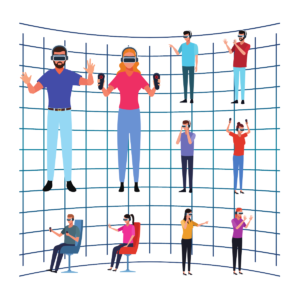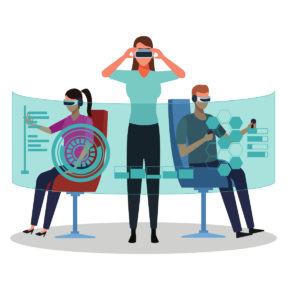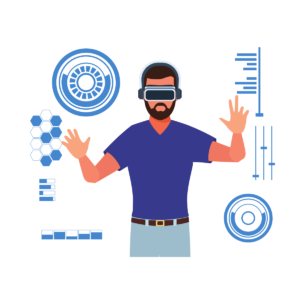About the Metaverse
The “metaverse” is a hypothetical iteration of the Internet as a single, universal, and immersive virtual world that is facilitated by the use of virtual reality (VR) and augmented reality (AR) headsets. In colloquial usage, a “metaverse” is a network of 3D virtual worlds focused on social connection. (Wikipedia)

The Metaverse is an immersive internet where we’ll be able to work, play, and socialize – it may not yet be a full-blown reality but growth in Augmented Reality and Virtual Reality is moving at an incredible pace due to the rapid adoption of these technologies in the gaming, entertainment, education, tourism, retail, and healthcare sectors and will continue to advance in 2023.
The market is worth billions. Estimates vary but the global combined augmented reality, virtual reality, and mixed reality market was worth over $28 billion in 2022 and is expected to explode to over $252 billion by 2028 according to Statista.
2023 could well be the year that defines the direction of the metaverse for the next decade. Here are just some of the things we might expect to see.

Realistic Avatars
Our avatars, the metaverse versions of ourselves, will begin to look more and more like us. Advances in motion capture technology mean that not only will our avatars look like us and sound like us, but they will be able to adopt our unique body language and gestures. Alongside this, development in AI-enabled autonomous avatars means our dopplegangers could soon represent us in the digital universe even if we’re not logged in. Can’t be in two places at once? Think again.

Haptic Technology
Haptic is from Greek and means “tactile, pertaining to the sense of touch”
At the risk of simplifying a very complex branch of VR science, basically we will be able to feel the things we touch in the virtual world and control and move objects using the slightest of touches. We will feel the weight and coolness of a weapon in our hand in a gaming scenario or indeed in a military training exercise and the lightness and sharpness of a scalpel in a medical training situation. The technology is mind blowing and the potential use cases endless. Sophisticated touch technology is already found in industrial, military, and medical applications and training with haptics is becoming more and more common. 2023 is sure to see more incredible advances in haptic science and technology.
The Metaverse Workplace
One key area to watch in 2023 is the work environment in the metaverse. The metaverse will allow companies to have a virtual office where employees can hold meetings, attend training sessions, and work on projects together.
Companies are embracing remote working and virtual collaboration, and many are already using metaverse technology like AR and VR to conduct functions such as training and onboarding. This trend looks set to continue across many sectors and industries as the technology becomes more advanced.


Augmented e-Commerce
The use of AR and VR technology is expected to become increasingly sophisticated in the e-commerce industry. Customers will be able to try on clothes virtually using AR technology or see how furniture or a piece of art would look in their home before making a purchase. We have already seen increased use of VR and AR to enhance the online shopping experience and this trend will continue to gain momentum in 2023.
Immersive Entertainment
2023 will be all about immersive experiences in entertainment, sports, music, gaming, art, and wellness. We will see more AR and VR driven Immersive experiences such as the hugely successful van Gogh exhibition and the Abba Voyage concerts.
The growth in immersive entertainment is huge news for venues. Casinos, hotels and resorts, retail sites, and stadiums are exploring ways to tap into the trend and the additional revenue stream that it can provide alongside traditional ticket sales.

Mixed Reality
Mixed reality is a blend of the physical and digital worlds and is a trend that is set to grow in 2023. As AR and VR technology continues to evolve there will be an increasing number of cross-platform mixed reality experiences. Mixed reality has been used in applications across fields including retail, design, education, entertainment, military training, healthcare, and human-in-the-loop operation of robots. The best of both worlds – the ability to travel without leaving your living room, experience a historical battle from your classroom, train for a disaster scenario as a first responder that feels very real but carries no risk. Again, the applications are limited only by our imagination.
2023 does look set to be the year where advances in AR and VR mean that the Metaverse becomes less hypothetical and more reality.

